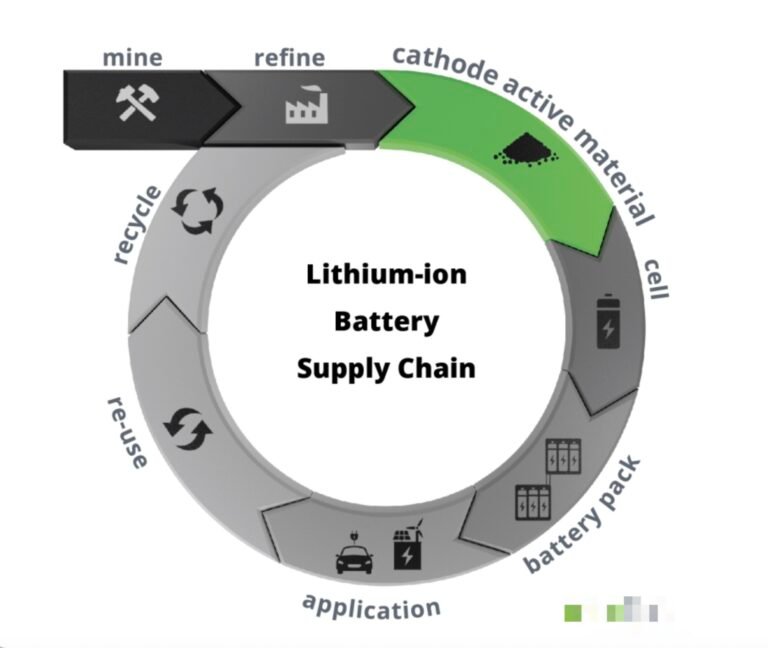Material composition of energy storage battery
The material composition of the energy storage battery usually includes the following key components:
First, electrode material
1. Positive electrode material
Common materials: There are a variety of cathode materials for energy storage batteries, including oxides such as lithium cobaltate (LCO), lithium manganate, lithium iron phosphate (LFP), and ternary materials such as lithium nickel-cobalt manganate (NCM). These materials have high energy density, good cycle stability and safety.
Special materials: In some specific types of energy storage batteries, such as sodium-ion batteries, the anode material can be layered oxide, polyanionic oxide or Prussian blue compounds.
2. Negative electrode material
Common materials: Graphite is the most commonly used negative electrode material in lithium-ion batteries, which has good electrical conductivity and cycle stability. In addition, materials such as silicon and metal oxides are also used as negative electrode materials to improve the energy density of the battery.
New materials: With the development of technology, new anode materials such as silicon carbon composite materials are gradually emerging, which are expected to further improve the performance of energy storage batteries.
Second, electrolyte
Liquid electrolyte: Liquid electrolyte is usually an organic solvent, such as carbonate solution, ester solution, etc., which has good ionic conductivity.
Solid electrolyte: Solid electrolyte is one of the hot spots of research in recent years, they have higher safety and stability, is expected to be widely used in the future energy storage batteries.
Third, diaphragm
Function: The diaphragm is located between the positive and negative electrodes and is used to isolate the positive and negative electrodes to prevent short circuits and allow the conduction of ions.
Common materials: Diaphragm materials are mostly polymer materials, glass fibers, etc., which have good insulation properties and ion conduction properties.
Fourth, other auxiliary materials
Battery packaging materials: battery packaging materials require good packaging performance and electrical isolation performance, commonly used materials are aluminum foil, polyamide film, polyethylene and so on.
Additives: The energy storage battery may also contain electrolyte additives, conductive additives, binders and other auxiliary materials to improve the performance and stability of the battery.
Fifth, the importance of material composition
The material composition of the energy storage battery has a crucial influence on its performance. The positive electrode material determines the energy density and cycle life of the battery, while the negative electrode material affects the capacity and safety of the battery. The performance of the electrolyte is directly related to the ion conduction efficiency and safety of the battery, and the quality of the diaphragm determines the risk of internal short circuit of the battery. Therefore, when designing and manufacturing energy storage batteries, these materials need to be carefully selected and optimized to ensure that the battery has excellent performance and stability.
In summary, the material composition of the energy storage battery is a complex and fine system, and various materials cooperate with each other to jointly determine the performance and life of the battery. With the continuous development of technology, new materials and designs will continue to emerge, opening up new ways for energy storage batteries to improve performance and reduce costs.







